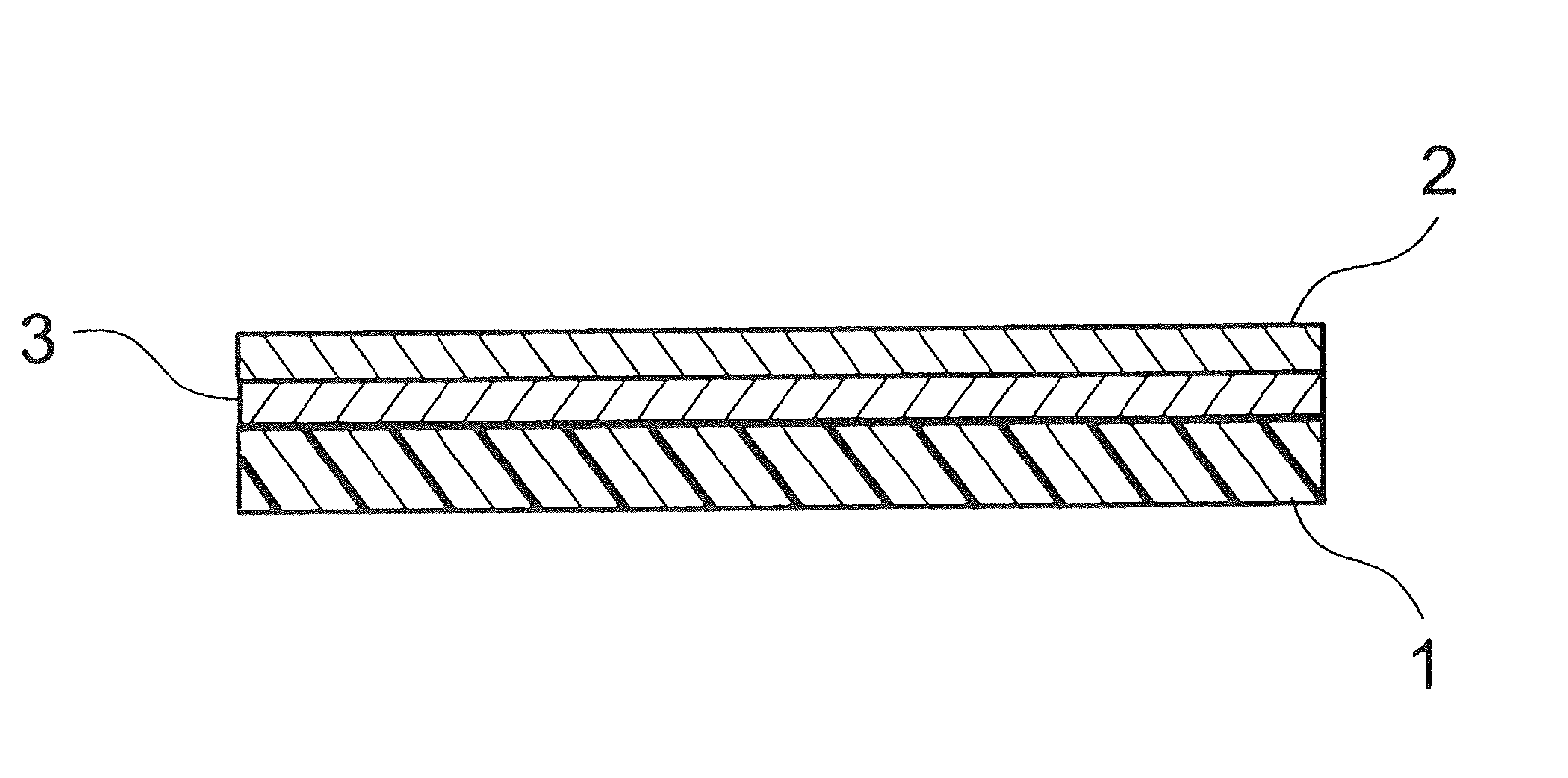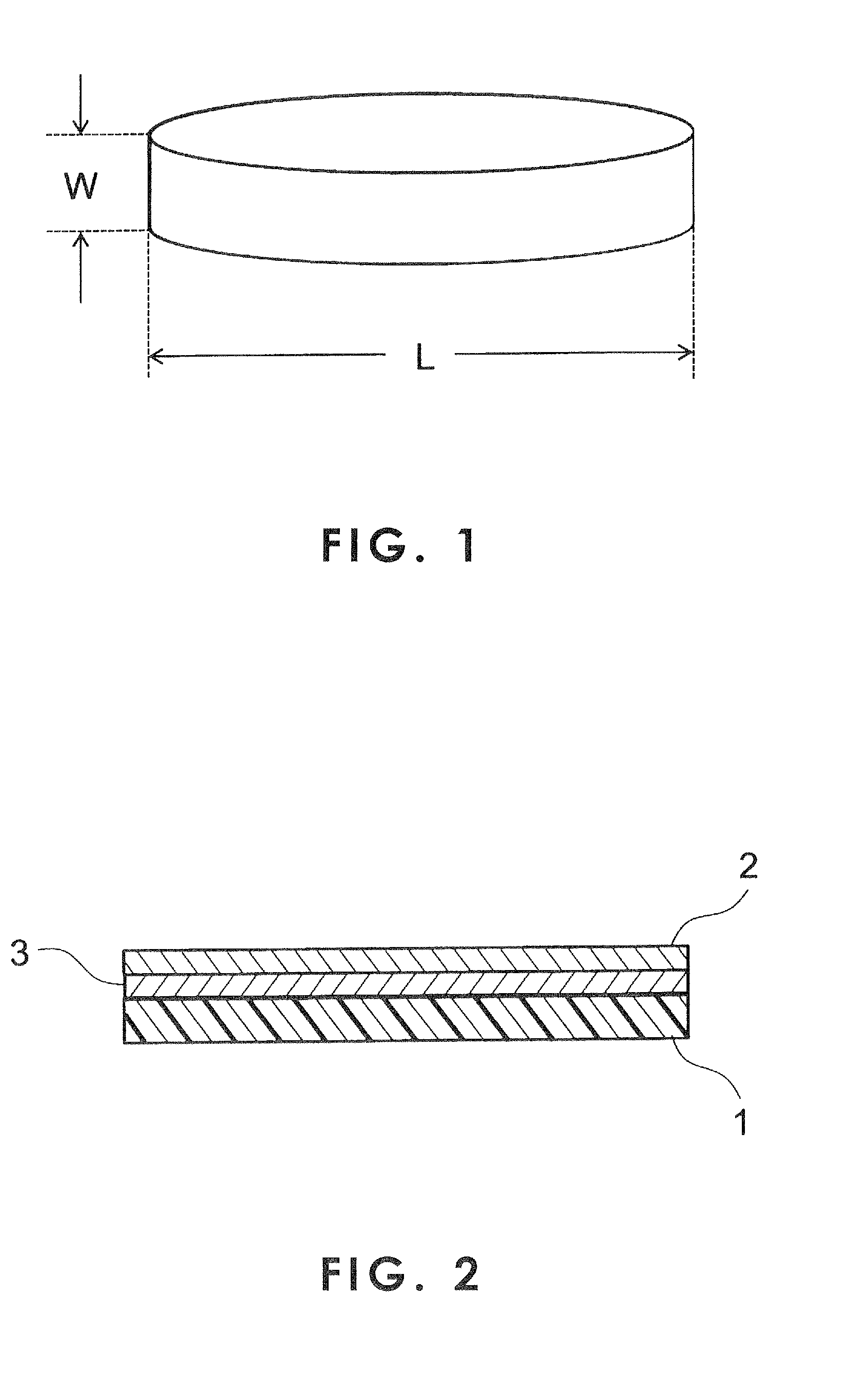POLYCRYSTALLINE ALUMINUM NITRIDE BASE MATERIAL FOR CRYSTAL GROWTH OF GaN-BASE SEMICONDUCTOR AND METHOD FOR MANUFACTURING GaN-BASE SEMICONDUCTOR USING THE SAME
a technology of gan-base semiconductor and polycrystalline aluminum nitride, which is applied in the direction of crystal growth process, transportation and packaging, synthetic resin layered products, etc., can solve the problems of warpage, high cost (sapphire and sic), etc., and achieve good yield
- Summary
- Abstract
- Description
- Claims
- Application Information
AI Technical Summary
Benefits of technology
Problems solved by technology
Method used
Image
Examples
example 1
[0047]An aluminum nitride powder (mean particle diameter 1 μm, oxygen content 1.0% by weight) and a yttria (Y2O3) powder (mean particle diameter 1 μm), and an alumina (Al2O3) powder (mean particle diameter 1 μm) were mixed together at a mixing ratio specified in Table 1 to prepare a starting material powder. Regarding the mixing amounts in the table, yttria that is a first sintering aid, alumina that is a second sintering aid, and the aluminum nitride powder were mixed together to give a 100 parts by weight of the starting material powder.
[0048]After the mixing, the starting material powder was added to a solvent such as toluene or ethanol, and a dispersant was added thereto. Thereafter, an organic binder and a plasticizer were added followed by further mixing. The mixture was formed into a 1.2 mm-thick green sheet by doctor blading. The green sheet was cut into a size of 170 mm in length×170 mm in width, was then degreased, and was sintered under conditions of 1700° C.×5 hr to prep...
example 2
[0051]An experiment was carried out in the same manner as in Example 1, except that Gd2O3 (samples 9 to 14) was used as the first sintering aid and alumina was used as the second sintering aid. The aluminum nitride powder (impurity oxygen content 1.2% by weight), the first sintering aid, and the second sintering aid used each had a mean particle diameter of 1.2 μm. The sintering was carried out at a temperature in the range of 1700° C. to 1800° C. and, for all the sheets, the sintering was carried out in a nitrogen atmosphere. For the samples thus obtained, measurements were carried out in the same manner as in Example 1. The results are shown in Table 2.
TABLE 2Sample 9Sample 10Sample 11Sample 12Sample 13Sample 14Mixing amount of0.94.710.020.230.035.0Gd2O3 (pts. wt)Mixing amount of0.01.96.08.421.026.0Al2O3 (pts. wt)Volume fraction of97.692.185.680.058.548.6AlN phase insintered compactMean grain diameter9.76.94.83.42.52.3(μm)Constituent phaseMainlyMainlyMainlyMainlyMainlyMainlyother ...
example 3
[0053]An experiment was carried out in the same manner as in Example 1, except that Dy2O3 (samples 15 to 20) was used as the first sintering aid and alumina was used as the second sintering aid. The aluminum nitride powder (impurity oxygen content 1.2% by weight), the first sintering aid, and the second sintering aid used each had a mean particle diameter of 1.2 μm. The sintering was carried out at a temperature in the range of 1700° C. to 1800° C. and, for all the sheets, the sintering was carried out in a nitrogen atmosphere. For the samples thus obtained, measurements were carried out in the same manner as in Example 1. The results are shown in Table 3.
TABLE 3Sample 15Sample 16Sample 17Sample 18Sample 19Sample 20Mixing amount of0.94.710.022.030.035.0Gy2O3 (pts. wt)Mixing amount of0.01.94.68.915.016.0Al2O3 (pts. wt)Volume fraction of98.093.486.380.059.249.8AlN phase insintered compactMean grain diameter9.87.04.93.52.62.4(μm)Constituent phaseMainlyMainlyMainlyMainlyMainlyMainlyothe...
PUM
| Property | Measurement | Unit |
|---|---|---|
| Temperature | aaaaa | aaaaa |
| Temperature | aaaaa | aaaaa |
| Temperature | aaaaa | aaaaa |
Abstract
Description
Claims
Application Information
 Login to View More
Login to View More - R&D
- Intellectual Property
- Life Sciences
- Materials
- Tech Scout
- Unparalleled Data Quality
- Higher Quality Content
- 60% Fewer Hallucinations
Browse by: Latest US Patents, China's latest patents, Technical Efficacy Thesaurus, Application Domain, Technology Topic, Popular Technical Reports.
© 2025 PatSnap. All rights reserved.Legal|Privacy policy|Modern Slavery Act Transparency Statement|Sitemap|About US| Contact US: help@patsnap.com


